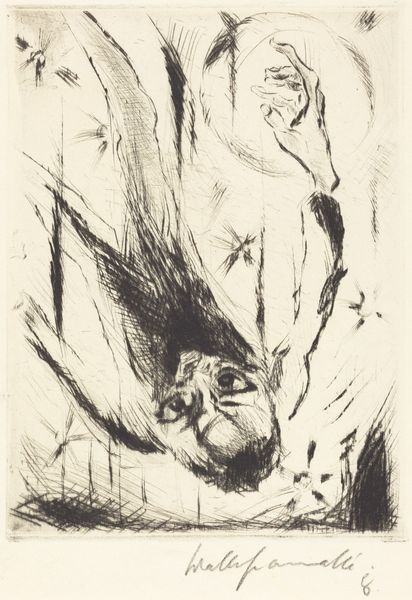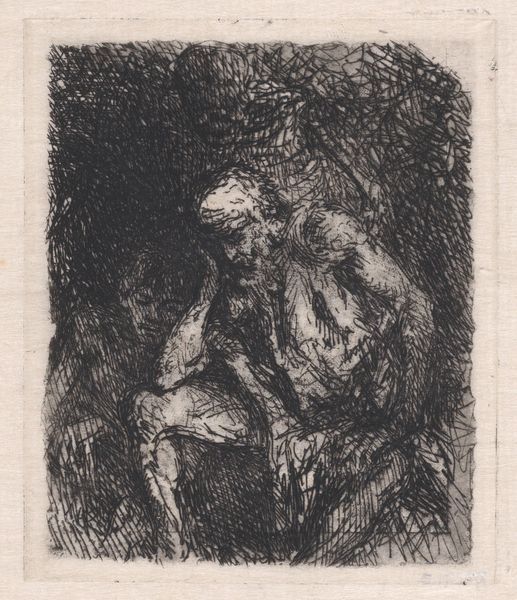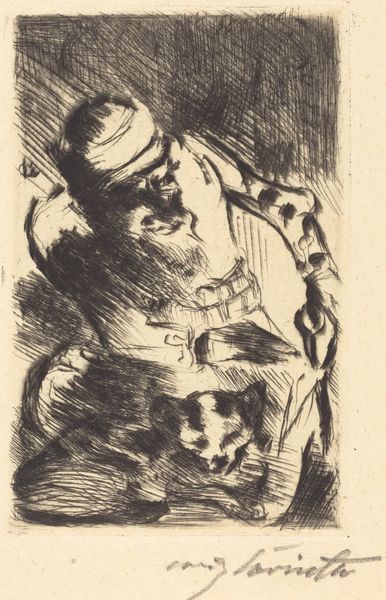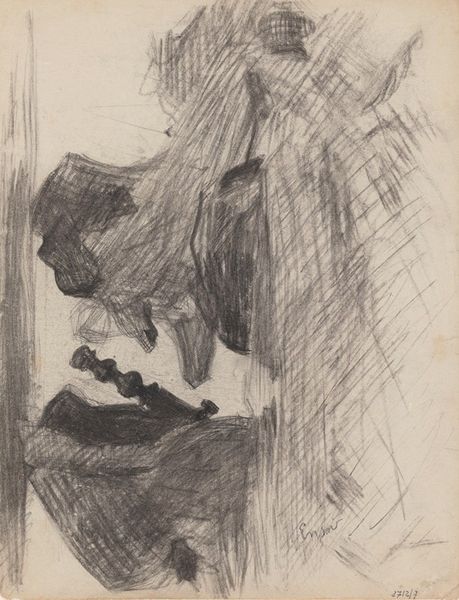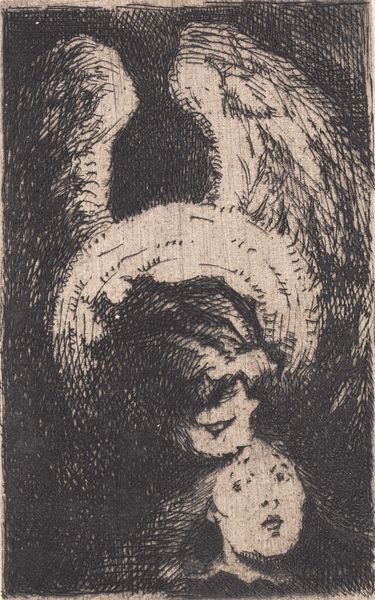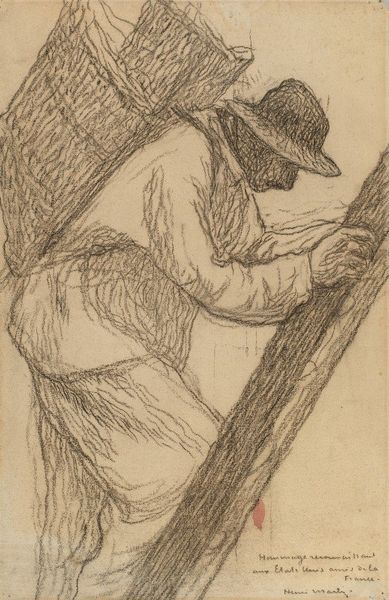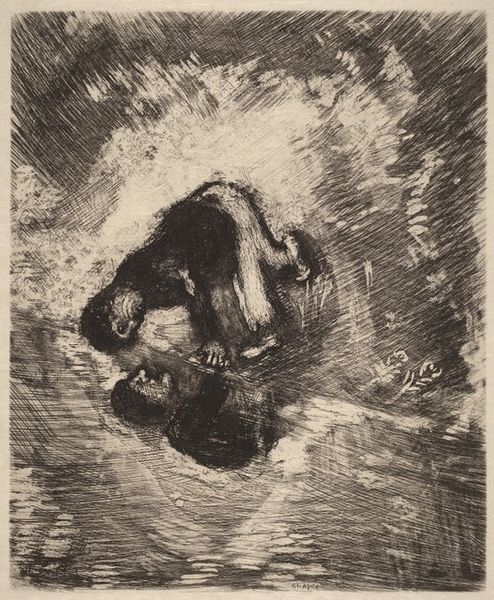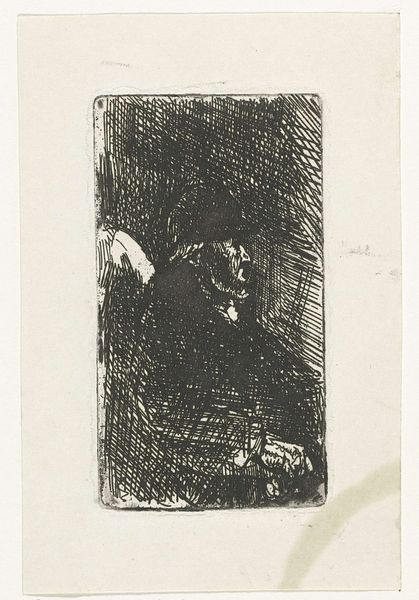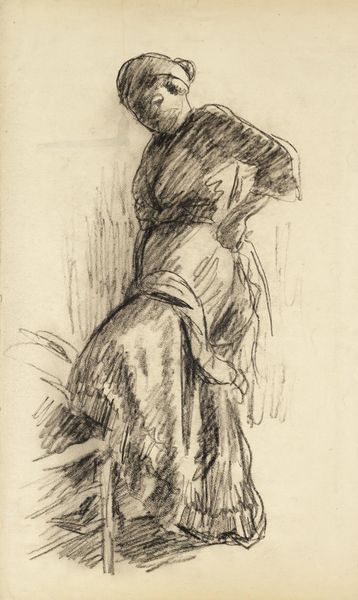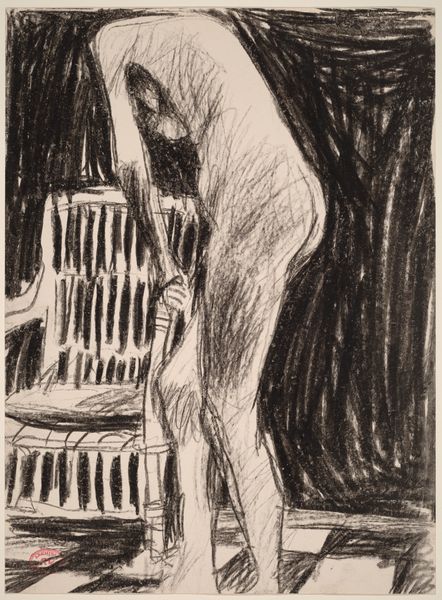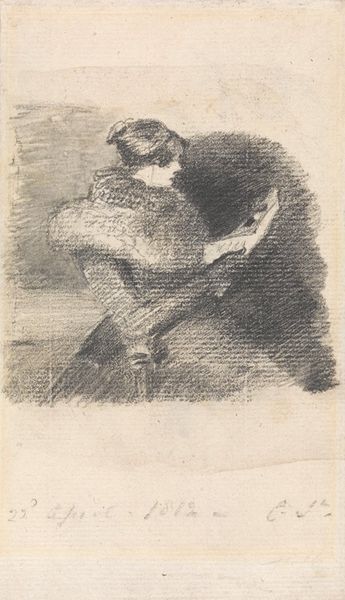
print, etching
#
portrait
# print
#
etching
#
figuration
#
portrait drawing
#
genre-painting
#
realism
Dimensions: 120 mm (height) x 56 mm (width) (plademaal)
Curator: Looking at this striking etching, one can’t help but notice its intense, almost haunting presence. This is "Siddende tiggermunk," or "Seated Begging Monk," created sometime between 1865 and 1917 by Frans Schwartz. It’s currently held at the SMK, the National Gallery of Denmark. Editor: It definitely makes an immediate impression. There's such a tactile quality to the line work, a roughness that conveys both the physical reality and perhaps the inner turmoil of the subject. It's quite stark. Curator: The figure itself is intriguing. Schwartz uses this incredible detail, the man’s clothing is almost threadbare, the etched lines becoming like the weave itself. His gaze, though partially obscured by the hood, is direct, conveying both resignation and a kind of enduring spirit. Note also how his hands, clasped in his lap, seem worn and weathered. Editor: Absolutely. And thinking about etching as a process, the repetitive labor involved, the immersion of the plate in acid, feels strangely apt here. The material resonates with themes of hardship and endurance depicted in the image. There is also such great contrast here between the fine detailed work, with the more simple line. What kind of statement do you think Schwartz was trying to make, considering the climate he was working in? Curator: The image clearly belongs to a tradition of realist art and genre painting, focusing on everyday figures from the lower strata of society, often with social commentary. By depicting a begging monk, Schwartz seems to question societal structures and assumptions around poverty and religion. Monks have been powerful figures of culture, learning, and hope throughout history, so to capture one at the bottom of society says much. Editor: Yes, but also consider the materials. Prints, including etchings, were often far more accessible than unique paintings. Making this image as a print suggests an intention to reach a wider audience and therefore the subject is being portrayed for potentially a broader market. Curator: True, making the work a vehicle for both observation and social empathy within a growing industrial and consumer market. A very powerful convergence. I'll definitely think differently about the intersection of spiritual imagery, art making, and societal consumption next time I see something similar! Editor: Yes, material constraints often tell the story of the time!
Comments
No comments
Be the first to comment and join the conversation on the ultimate creative platform.
